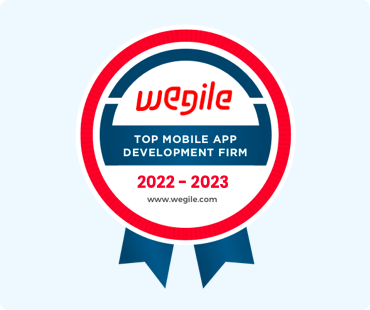In the fast-paced world of digital innovation, the development of wearable apps has evolved from being a specialized luxury to becoming an essential part of everyday life. As technology seamlessly integrates into our daily lives, wearable devices are becoming indispensable tools for health monitoring, personal productivity, and social interaction. The worldwide market for wearable technology is expected to grow to USD 265.4 billion by 2026, with a compound annual growth rate (CAGR) of 18% over the forecast period. Despite their rising popularity, the complexities of developing applications for such devices are not commonly explored beyond surface-level functionality. This development genre poses unique challenges, including the need for precision in user-centric design and an unyielding demand for resource efficiency. These applications must strike a balance between subtle and powerful, seamlessly combining advanced technology with dependable performance and user-friendly design. In this blog, we will delve into the strategies for successfully navigating these challenges, guaranteeing that wearable apps meet and surpass user expectations in a rapidly evolving technological environment.
Wearable app development is dedicated to creating applications that operate seamlessly on wearable devices. This specialized field requires an adept understanding of balancing functionality with the constraints of smaller screens and less powerful processors. The software should be highly efficient and provide meaningful, context-aware interactions without significantly impacting the device's battery life. This requires a development approach that prioritizes optimizing the user interface and experience.
Successfully tackling the complexities of wearable app development requires a careful balance between design and functionality. Our team of experts in wearable app development is dedicated to pushing boundaries and creating apps that are both efficient and practical. We strive to enhance user engagement while ensuring that device resources are not overburdened. This focuses on prioritizing user interface simplicity, ensuring fast access to information, and optimizing background processes to maximize battery life.
Examples of wearable technology in the real world include:
Fitness Trackers: Devices like Fitbit and Garmin monitor heart rates, sleep patterns, and calorie expenditure, motivating users to maintain healthy lifestyles.
Smartwatches: Beyond fitness tracking, devices such as the Apple Watch facilitate mobile payments, provide navigation, and allow users to respond to messages and calls directly from their wrist.
Augmented Reality Glasses: Microsoft HoloLens and Google Glass display information overlays that aid in complex tasks like surgery or machinery repair, offering hands-free data access.
VR Headsets: Platforms like Oculus Rift and HTC Vive create fully immersive environments for gaming, educational simulations, and virtual travel experiences.
Various industries have embraced the use of wearable applications:
Healthcare: Wearables like continuous glucose monitors and heart rate sensors provide real-time data to both patients and doctors, facilitating better disease management and preventative care.
Fitness: Advanced sensors in wearable devices offer detailed analytics on users' physical activities and diet, helping in tailored workout plans and monitoring progress.
Entertainment: Integrated with immersive technologies, wearables such as VR headsets offer groundbreaking experiences in movies and gaming, creating fully immersive environments.
Transportation: GPS-enabled wearables help with navigation, providing directions and updates to optimize routes and enhance travel safety.
Social: Smartwatches and augmented reality glasses enable users to receive social media notifications and interact with their networks without the need for a smartphone.
Travel: Wearable devices streamline travel experiences by offering real-time notifications about flight delays, gate changes, and local sightseeing information via easy-to-access wearable apps.
Apart from these, wearables are also being utilized in industries like e-commerce, education, lifestyle, sports, and food & restaurants, expanding their influence and proving their versatility in enhancing personal and professional activities across various sectors.
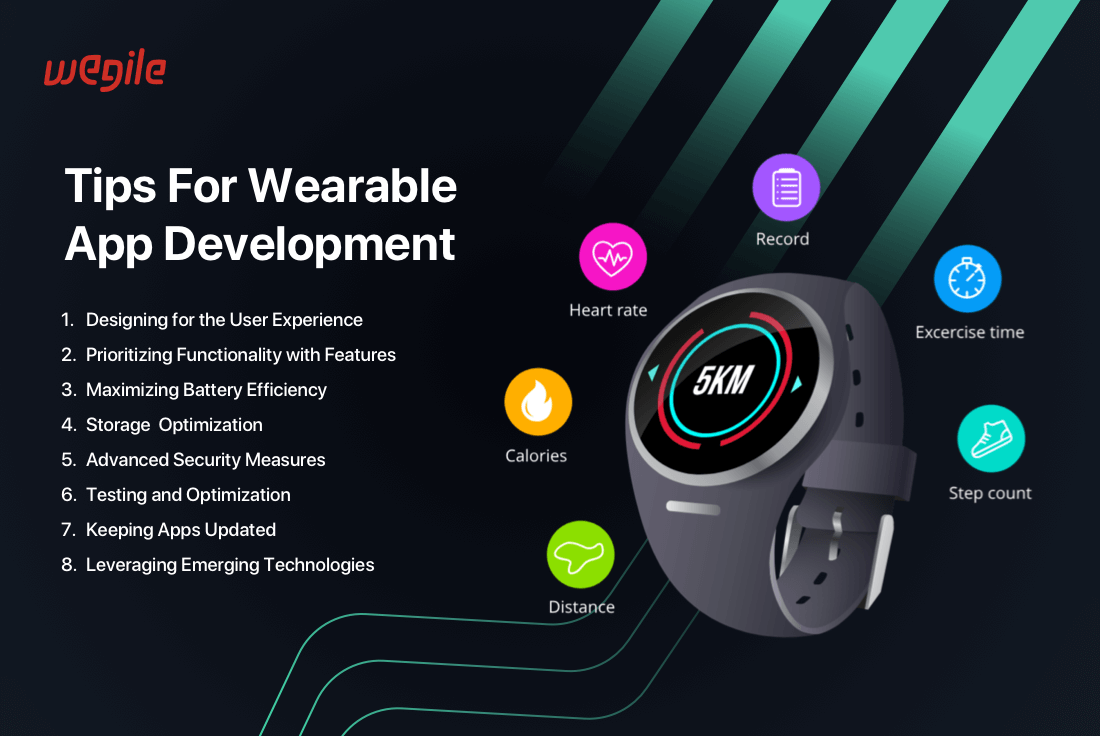
When it comes to wearable app development, the focus is on creating a user experience that goes beyond the usual interface design. It involves crafting a seamless user journey that makes the most of the limited interaction space available on wearable devices. Our team of professionals at Wegile is dedicated to streamlining user experience by optimizing functionality and ensuring easy accessibility. While developing wearable apps, voice and gesture commands are prioritized over touch inputs, particularly on smaller displays where touching can be difficult. The aim should be to offer a user experience that is smooth and intuitive, seamlessly fitting into the user's everyday routine without any inconvenience or frustration. This approach guarantees that the wearable device improves the user's lifestyle instead of making it more complex.
While it’s tempting to pack a wearable app with many features, the development strategy should emphasize the importance of functionality over feature quantity. Every feature should be meticulously evaluated to ensure its practicality and influence on the device's performance and user experience. Important features for wearable apps typically include activity tracking, personalized notifications, and health monitoring, all designed for efficient interactions and easy visibility. These features must function consistently and intuitively, delivering genuine value without burdening the user or draining the device’s resources. By prioritizing the user's needs, wearable apps can become indispensable tools that subtly deliver targeted functionality.
Must Read: The Future Of App Development: Predictions For 2024 And BeyondBattery efficiency is paramount in wearable technology since smaller batteries are utilized in such devices. Optimizing battery life extends beyond mere convenience; it is crucial for user retention and satisfaction. At Wegile wearable app development strategies focus on minimizing power consumption without compromising app performance. Techniques include optimizing app processes to run only when necessary, employing low-power sensors, and reducing background data usage. Effective resource management also plays a key role, where memory and processor use are finely balanced to ensure smooth operation. By incorporating these techniques, you can create wearable apps that are both powerful and sustainably efficient. This will improve the longevity of the device and enhance the user experience.
Security is a top priority in developing wearable apps, mainly because these devices often handle sensitive personal data such as health metrics and payment information. It is crucial to incorporate robust security measures at every level of the development process. This includes employing secure coding practices to avoid common vulnerabilities, encrypting data in transit and at rest to protect against data breaches, and implementing robust user authentication methods. Techniques like biometric verification and multi-factor authentication can significantly enhance the security posture of wearable devices. By investing in advanced security measures, businesses can safeguard user data and build trust in wearable technology.
Thorough testing is indispensable in wearable app development to ensure that applications perform reliably across all intended devices and scenarios. Given the diversity of wearable technology, from different screen sizes to varying hardware capabilities, it is crucial to conduct extensive testing that includes usability, compatibility, and performance assessments. Optimization efforts should focus on refining the app's responsiveness and stability, ensuring it can handle real-world use cases effectively. Emphasizing iterative testing processes—where feedback is continuously integrated to improve the app—helps identify and resolve potential issues early, thereby enhancing the app's overall quality and user experience.
Ensuring that wearable apps remain current is essential for maintaining their functionality and security. Regular updates allow for the enhancement of features and the resolution of potential bugs that might impact user experience. Moreover, with each update, it's essential to align the app with the latest operating system versions and to take advantage of new hardware capabilities. Regularly updating the application keeps users engaged and most importantly, reinforces a strong commitment to maintaining app security. Constantly updating wearable apps strengthens security protocols and adheres to the most up-to-date data protection regulations, guaranteeing the app remains secure and compliant.
Incorporating emerging technologies can significantly enhance the functionality and appeal of wearable apps. Techniques like machine learning, augmented reality, and context-aware computing can transform how users interact with their devices, making applications more intuitive and responsive to their needs. For instance, machine learning algorithms can predict user behavior and automate certain functions. At the same time, augmented reality can provide innovative ways to display information and interact with the physical world through the device. Embracing these technologies pushes the boundaries of what wearable apps can achieve and sets a benchmark for future developments in this evolving field.
Successful wearable app development necessitates a comprehensive grasp of both the technology and the users. It encompasses more than just developing an app that works on a wearable device—it needs to be tailored for the device's unique design, optimize resource usage, prioritize security, and consistently integrate user feedback. By adhering to these guidelines, businesses can develop wearable apps that are both practical and user-friendly, ensuring their long-term relevance and usability. If you're looking for a reliable wearable app development company, connect with Wegile. We specialize in providing top-notch wearable app development solutions. Our team is highly knowledgeable in wearable technology and has a wealth of experience creating solutions for a wide range of industries. We pride ourselves on catering to clients with diverse needs and turning innovative visions into reality!
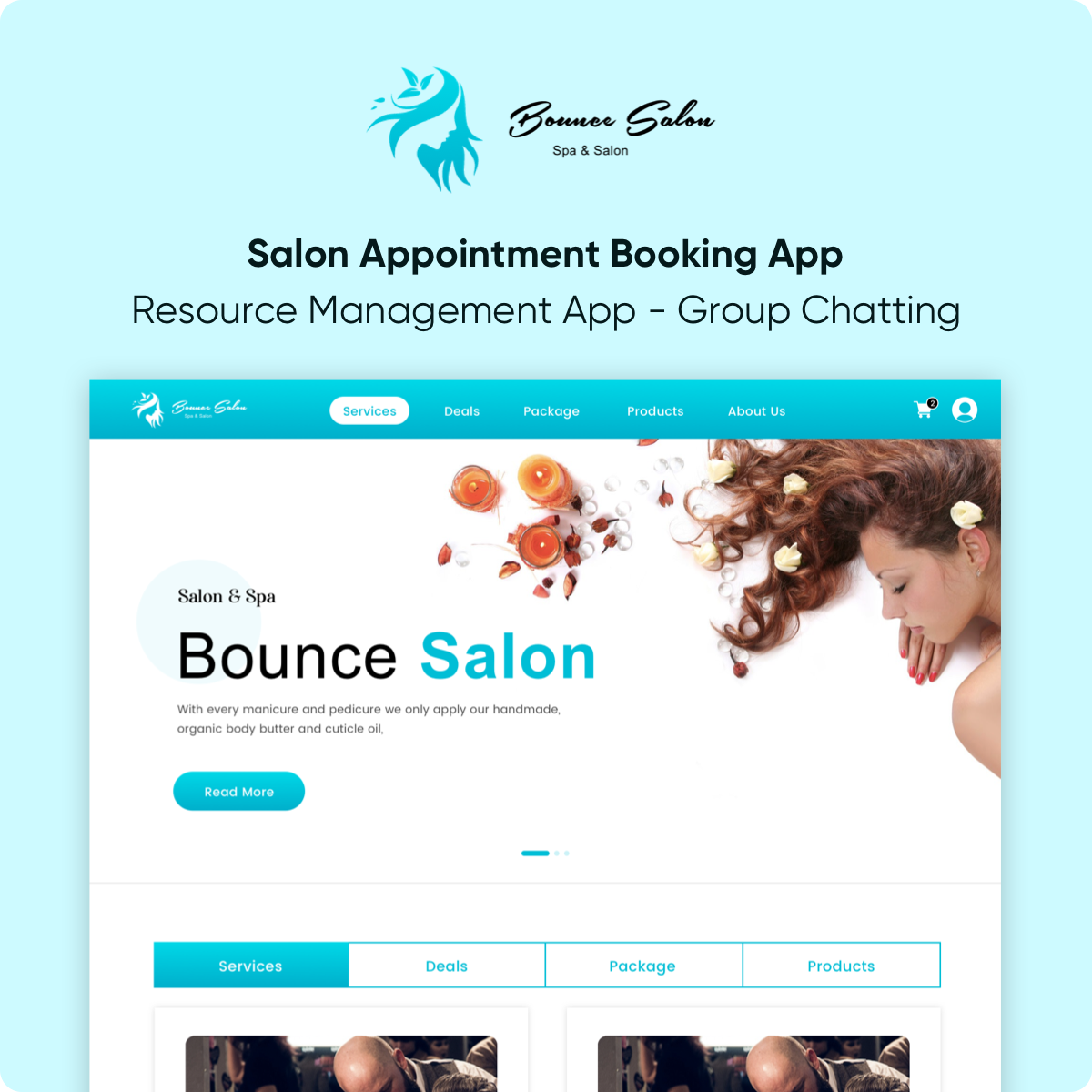
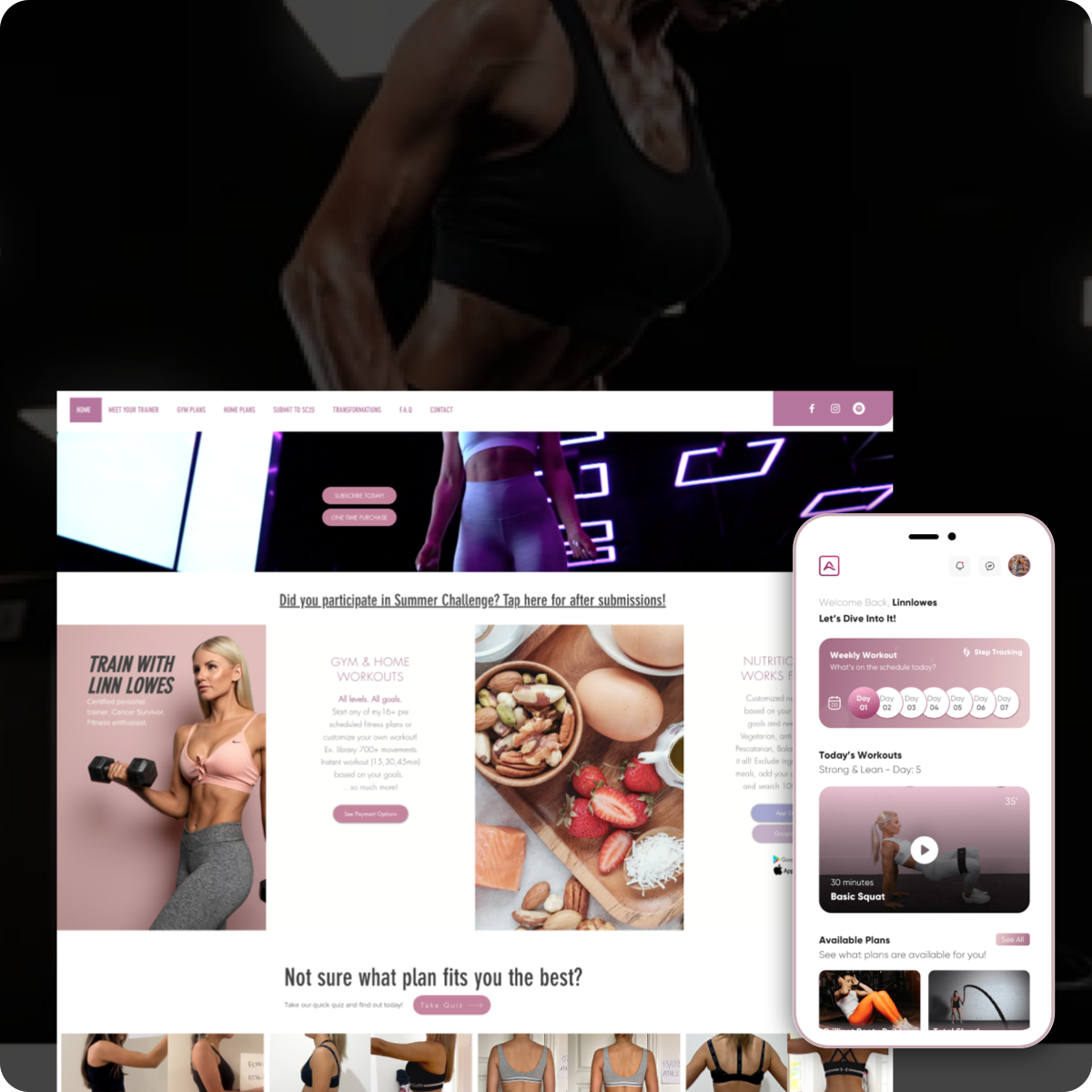
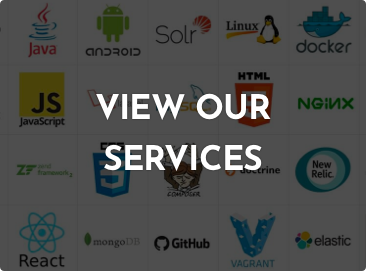 Browse Our Services
Browse Our Services
